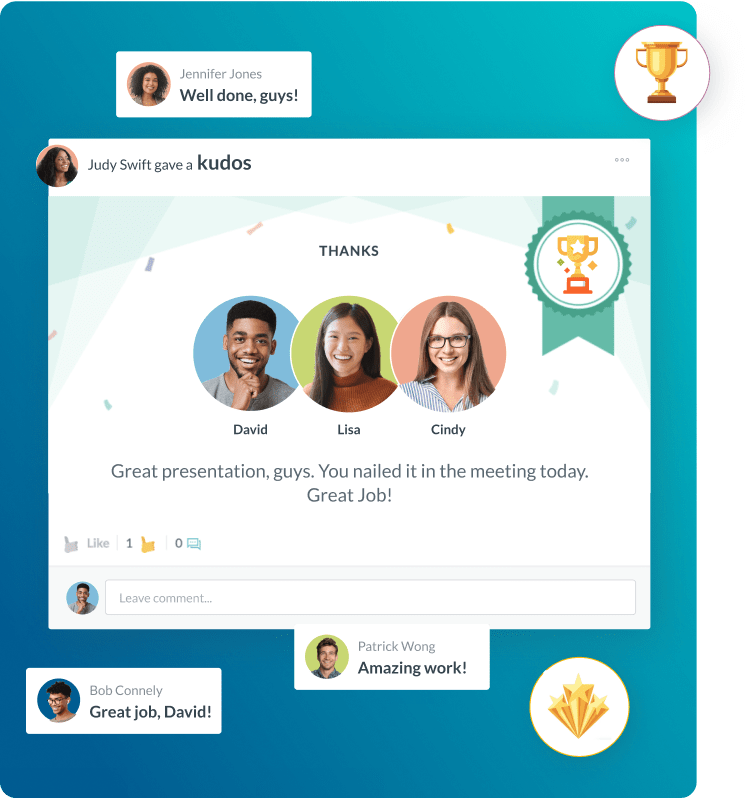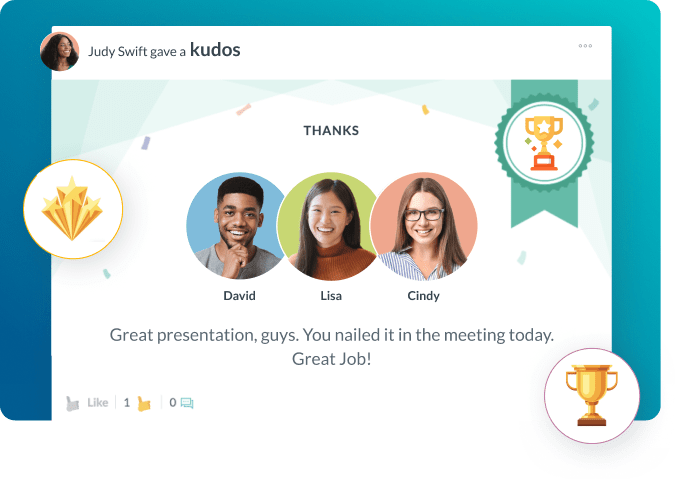HR to Salary Process
- Key Points of Strategic Compensation Administration
- Comparison of Traditional vs. Strategic Compensation Models
- Best Practices for Strategic Compensation
- Pitfalls to Avoid in Compensation Management
- Industry Applications of Strategic HR to Salary
- Implementation Plan for HR to Salary Strategy
- Future Outlook and Trends in HR to Salary
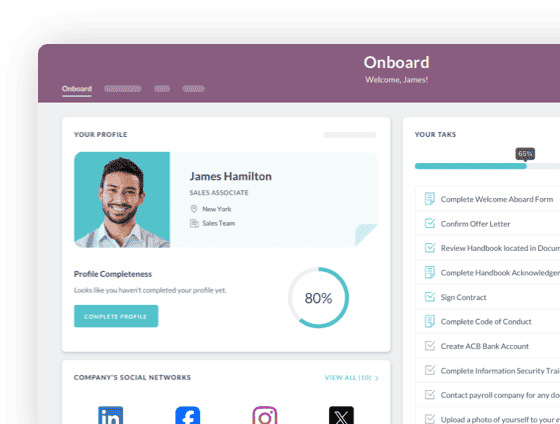
 Cut onboarding time
by 60%—here's the
Ultimate Checklist
that helped do it.
Cut onboarding time
by 60%—here's the
Ultimate Checklist
that helped do it.
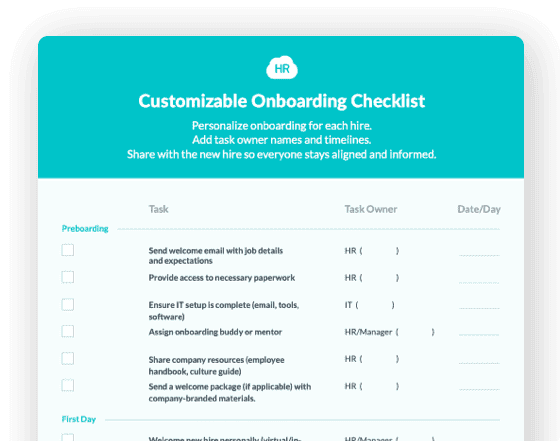
The idea of HR to Salary is key to running a modern business well. This process is the full, strategic function used by a company's Human Resources (HR) department. It designs, sets up, and manages all parts of employee pay, benefits, and total rewards. This process is more than just writing a paycheck. It is a critical business tool. It ensures a company can attract, motivate, and keep the skilled workers needed to meet its goals. When HR links pay choices to business results, they change HR from a cost area into a strategic partner. This partner directly helps with profits and competitive advantage. The whole system needs accurate employee data management to make fair and reliable pay decisions.
A well-run HR to Salary process is vital because pay and benefits are one of the biggest costs for any organization. Strategic compensation management lowers legal risks. It makes sure the company follows all local, state, and federal wage laws. More importantly, it directly impacts the employee value proposition (EVP). This is the full offer an employer makes to employees for their work. By giving competitive and clear pay, HR shows that the company is a good and ethical place to work. Companies that clearly share their total rewards package—the mix of pay, benefits, and career chances—see big increases in employee morale and retention. The choice to invest in a robust Human Resources Information System (HRIS) platform can simplify these complex processes. This makes them more effective and less likely to have costly human errors.
Key Points of Strategic Compensation Administration
Good HR to Salary management needs a balanced approach. It must look at the company’s financial health and the workers' expectations. It is a process that always changes and needs constant checks on market trends and internal performance data.
Total Rewards Philosophy:
Pay is not just the base salary. It includes a full package, or total rewards, that brings together salary, bonuses, paid time off, health insurance, retirement plans, training, and even flexible work options. HR must explain this full value to employees, looking past the simple cash amount.
Market Competitiveness:
Pay must be measured against similar companies and local competitors. This ensures the company can attract top talent. This means buying and using reliable pay data to set competitive salary bands and ranges for every job.
Internal Equity and Fairness:
A main HR role is to ensure that employees with similar skills, experience, and performance are paid fairly compared to each other inside the company. Feeling that pay is unfair can quickly cause high employee turnover, low engagement, and even legal issues.
Performance Alignment:
The HR to Salary function directly links pay decisions—such as raises, bonuses, and promotions—to the company’s performance management system. This creates a pay-for-performance culture. This culture motivates employees and supports desired business results.
Regulatory Compliance:
HR manages the legal side of pay. This includes minimum wage laws, overtime rules (like the Fair Labor Standards Act in the U.S. (Source: U.S. Department of Labor)), and the rising trend of pay transparency laws. These laws demand sharing salary ranges in job ads in many places.
Comparison of Traditional vs. Strategic Compensation Models
Moving from just an administrative payroll job to a strategic HR to Salary model needs a basic change in how leaders see pay. The strategic model uses compensation as an investment to drive business success.
|
Feature |
Traditional Compensation Model |
Strategic Compensation Model (HR to Salary) |
|
Primary Goal |
Minimize labor cost and maintain basic legal compliance. |
Attract and retain top talent, drive company performance, and link rewards to business strategy. |
|
Data Source |
Internal history, old stories, and minimum wage rules. |
Real-time market data, deep compensation surveys, and internal performance scores. |
|
View of Salary |
A fixed expense or cost to be controlled. |
A variable investment with a measurable return on investment (ROI) in terms of productivity and retention. |
|
Transparency |
High secrecy; pay is confidential between employee and manager. |
High transparency; clear salary bands and a well-shared total rewards statement are normal. |
|
HR's Role |
Administrator, processor, and compliance checker. |
Strategic consultant, data analyst, and advocate for employee engagement. |
Best Practices for Strategic Compensation
Using a strategic HR to Salary approach can change your workforce for the better. By following proven best practices, business leaders can ensure their pay strategy is competitive, fair, and legal.
Define and Document a Total Rewards Strategy:
Put your philosophy on pay and benefits into a written plan that fits your company mission. This plan should clearly state your market position (e.g., paying at the 50th or 75th percentile) and explain how it supports the overall business plan.
Conduct Regular Compensation Audits:
At least once a year, do a full audit. Check for internal equity problems, such as unexplained pay gaps between similar roles. This helps find potential bias or old pay structures. It also ensures compliance, which lowers the risk of unequal pay claims. Using a comprehensive HR software solution can automate much of the data needed for these audits.
Communicate the Full Total Rewards Value:
Simply having good benefits is not enough. You must clearly and constantly teach employees about the money value of their full package, not just their base salary. Giving personalized total rewards statements helps employees understand the major investment the company makes in their health, retirement, and growth.
Integrate Compensation with Technology:
Use a robust Human Resources Information System (HRIS). This system must connect pay planning, payroll, benefits, and performance data. This link ensures data is correct across all systems. It lets HR use analytics to figure out the financial impact of different pay scenarios. The right technology is key for effective time and attendance tracking and accurate payroll.
Train Managers as Compensation Communicators:
Managers are the first to talk about pay, but they often lack the training to handle tough questions. Give managers scripts and a deep understanding of the pay philosophy. This allows them to have clear, confident, and consistent talks about pay, raises, and market data.
Maintain Pay Transparency Within Legal Bounds:
Full transparency is still growing, but be clear about how pay decisions are made. Share clear salary ranges (when legally required or helpful) and the factors that cause movement within those ranges. These factors include learning new skills and performance ratings. According to a Gallup analysis, when pay is seen as fair, employee trust and commitment increase greatly.
Pitfalls to Avoid in Compensation Management
Even with good intentions, companies often fall into common traps. These traps can hurt their pay strategy and cause costly morale or legal problems.
Relying on Outdated Market Data:
Using salary surveys older than 12 months can lead to underpaying new hires. It can cause internal unhappiness, especially in fast-moving fields like technology or finance. Pay planning must use current, high-quality data.
The "Band-Aid" Approach to Pay:
Giving sudden, off-cycle pay raises just to keep one person from leaving, without checking the main pay structure, creates new internal fairness problems. This can quickly cause a widespread feeling of unfairness across the company.
Failing to Define Job Levels and Competencies:
Without clear job descriptions and competency models, you cannot use salary bands in a consistent way. Using pay grades inconsistently is a main reason for equal-pay lawsuits and a huge block to fair talent management.
Ignoring the Non-Monetary Value:
Leaders sometimes focus too much on base salary. They forget that more employees, especially younger ones, value flexibility, wellness programs, and strong learning opportunities as much as or more than a small raise. Failing to promote these non-cash rewards weakens the overall EVP.
Disconnecting Pay from Performance:
Simply giving everyone the same cost-of-living raise, no matter their work output, tells high-performers they are not valued. It also rewards low performers. The strategic HR to Salary function must ensure a clear, measurable link between what an employee or team gives and the resulting raise or bonus.
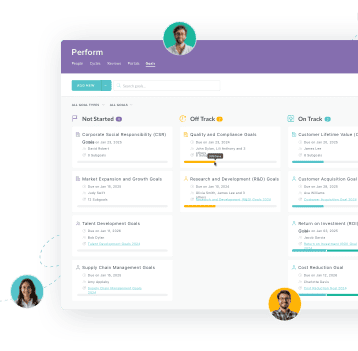
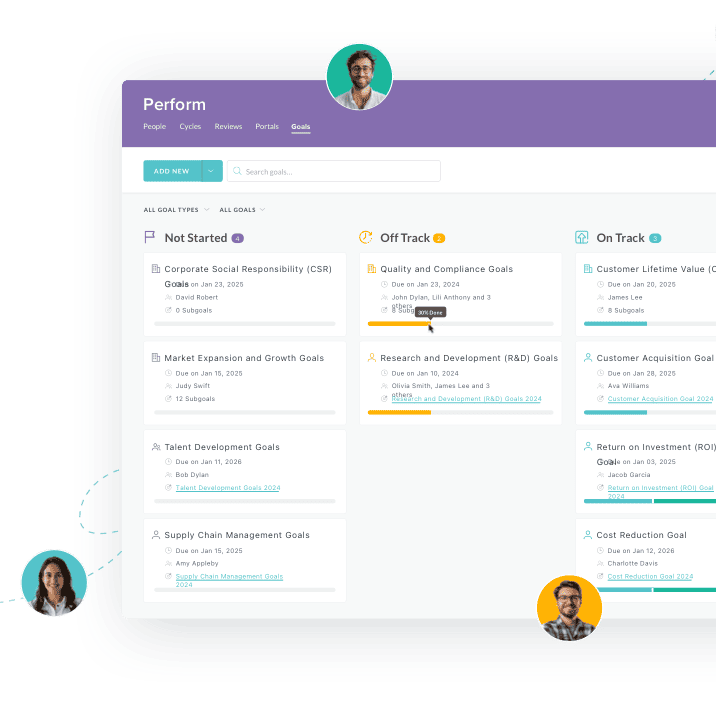
Industry Applications of Strategic HR to Salary
The strategic use of HR to Salary changes based on the unique needs and talent challenges of different industries.
Technology and Software Development
The technology sector fights hard for highly specialized skills like AI engineers and cloud architects. Their pay strategy must be fast and bold. HR teams here use a high-transparency model. They often link base pay to the 90th percentile of market data. They heavily rely on variable pay elements like stock options and equity grants to attract and keep elite talent. For example, a major Silicon Valley firm uses many tools. They stress not just salary but also a flexible work schedule and strong employee self-service tools for benefits management. They know that total flexibility is a key difference. According to a recent Forbes article, the future of benefits means thinking beyond just money, which is especially true in tech.
Retail and Hospitality
This sector has high turnover. Its workers are often paid hourly and spread across many places. The HR to Salary function here focuses on driving engagement, reducing missed work, and ensuring exact compliance with complex shift-work and overtime laws. The smart move is often to offer non-traditional benefits. These include predictive scheduling or early wage access. They help with the immediate financial needs of employees. A national retail chain lowered its turnover by 15% after it brought in a clear career path. This path showed the salary increases linked to getting new certifications and moving from a store associate role to a management position. This effectively linked employee growth to pay.
Healthcare and Pharmaceuticals
The healthcare industry deals with high-stakes, specialized jobs (nurses, researchers) and strict rules. The pay strategy must balance market competition for hard-to-find clinical talent with strict internal equity across many job roles. HR often uses a formal salary banding structure to stay consistent and fair. A top hospital system, for example, uses its HR technology platform to plan and manage pay for thousands of employees. It makes sure that their complex incentive programs for specialized staff follow compliance rules and patient outcome goals. This helps lower risk and manage their massive labor costs well.
Implementation Plan for HR to Salary Strategy
Setting up a strategic HR to Salary framework is a big project. It needs different teams to work together, especially finance and executive leaders.
Phase 1: Assessment and Design (Months 1–3)
Gain Leadership Buy-in: Make the case for strategic compensation. Focus on the ROI in lower turnover and better performance. Get the money needed for market data and any necessary HR technology upgrades.
Audit Current State: Do a full check of all current pay grades, job descriptions, and benefit offers. Find any major gaps between your current pay and the target market percentile.
Define the Total Rewards Philosophy: Work with executives to formally define what the company values in its pay and benefits. Document the pay-for-performance model. This first step is key to the entire pay management strategy.
Purchase Market Data: Buy high-quality, relevant salary survey data for all key job types and locations.
Phase 2: Building and Structuring (Months 4–6)
Develop Salary Structures: Create and document clear salary bands and ranges for all job types. Base them on the market data and your new philosophy. Define the exact rules for where an employee is placed and how they move within each band.
Job Slotting and Leveling: Match every existing job role to the new salary structure. Make sure job titles and levels are the same across the company. This process needs a strong focus on people operations.
Model Financial Impact: Work with the finance team to calculate the cost of making these changes. This includes the budget needed to fix any pay equity issues found in the audit.
Integrate HR Technology: Ensure your HRIS or payroll system can handle the new salary bands, pay cycles, and total rewards reports. This is where an investment in modern employee onboarding software and other HR tools pays off.
Phase 3: Communication and Rollout (Months 7–9)
Develop Communication Materials: Create full, easy-to-read materials. These should explain the new pay philosophy, pay structures, and the links between performance and pay.
Train Managers: Give required training to all people managers. Teach them how to talk about pay and promotion chances under the new system. Stress consistency and clarity.
Launch Total Rewards Statements: Send personalized statements to all employees. Clearly show the full value of their pay package, including all benefits and employer-paid taxes.
Implement New Cycle: Roll out the first merit review cycle under the new structure. Ensure pay decisions follow the written guidelines. The SHRM has noted that clear salary structures are a strong tool for building trust among employees. (Source: SHRM)
Phase 4: Measurement and Refinement (Ongoing)
Track Key Metrics: Keep checking important metrics. These include turnover rate, time-to-fill, employee engagement scores, and internal pay equity ratios.
Gather Feedback: Ask for regular employee feedback on how fair and clear the pay process is. Use short, frequent surveys.
Annual Review: Plan for an annual review of the market data. Also, review the full compensation plan every 18–24 months. This ensures the strategy remains competitive and compliant. This constant cycle is key to lasting success in human capital management.
Future Outlook and Trends in HR to Salary
The HR to Salary function is changing fast. This is driven by technology, social pressure, and new laws. Business leaders must get ready for a future where pay strategy is more dynamic and data-heavy than ever.
Hyper-Personalization of Total Rewards:
More flexible benefits mean that the total rewards package will become more tailored to each employee's needs. HR technology will need tools that let employees basically build their own benefits package. They can choose from a menu of options. These options may be a larger student loan help or a higher retirement match.
The Rise of Pay Transparency:
Laws requiring companies to post salary ranges in job ads are growing worldwide. This trend will force companies to quickly clean up and defend any existing pay differences. HR staff will need to become experts in explaining why pay varies. They will base their arguments on clear factors like skills, experience, and geographic cost of labor, not just performance reviews.
AI and Data-Driven Compensation:
Artificial Intelligence and machine learning are already being used. They analyze huge amounts of internal and external data. They help predict who might leave, model the cost of different pay plans, and flag possible pay equity issues before they become legal risks. HR teams will rely on advanced analytics to ensure pay is both fair and financially optimized.
Focus on Financial Well-being:
Beyond a retirement plan, companies are offering more financial wellness programs. These include debt management help and emergency savings accounts. Financial stress greatly hurts productivity. Strategic HR to Salary models will now include tools that help with overall employee wellness alongside traditional benefits.
Keep Reading
The Hidden Metrics of Frontline Success: Beyond Engagement Scores
"What gets measured gets managed, but what gets measured well gets transformed." — Peter
Embracing Diversity: Recognizing Different Cultures in the Workplace
Workplaces today reflect the incredible diversity of the world around us. People bring
From Manual to Automated: A Complete Guide to Digitizing Employee Onboarding for Large Organizations
Sarah Chen, Director of HR at a 7,000-employee healthcare organization, starts her Monday
Ready to streamline your onboarding process?
Book a demo today and see how HR Cloud can help you create an exceptional experience for your new employees.






